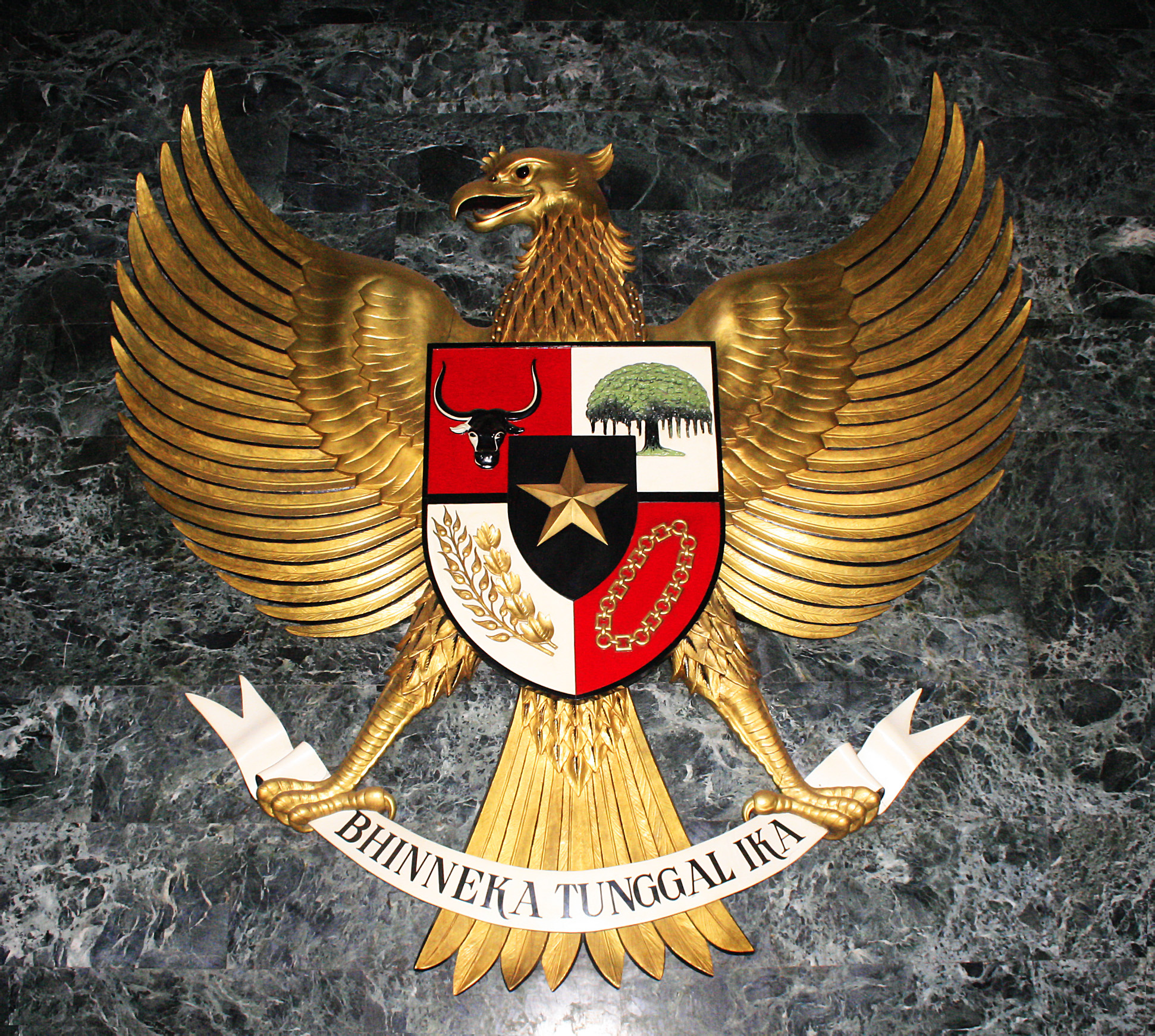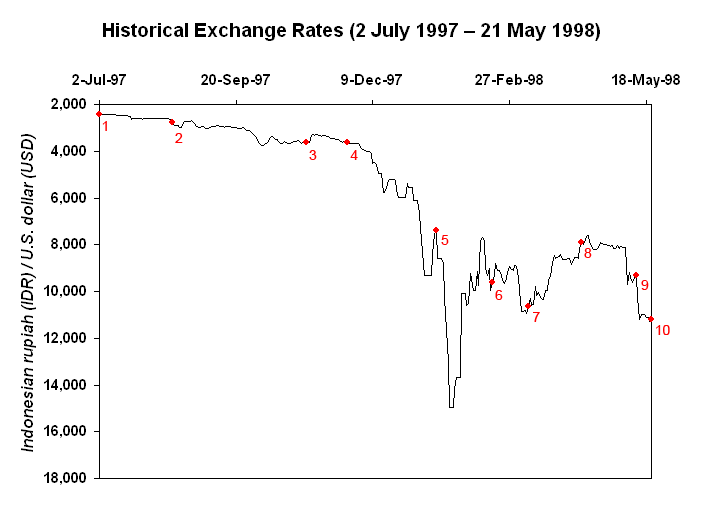|
MPR Building
The Parliamentary Complex of Indonesia (), also known as the MPR/DPR/DPD Building, is the seat of government for the Indonesian legislative branch of government, which consists of the People's Consultative Assembly (MPR), the House of Representatives (Indonesia), House of Representatives (DPR) and the Regional Representative Council (DPD). History Construction Sukarno administration Construction of the building was ordered on March 8, 1965 by Sukarno, the first president of Indonesia, through the Presidential Decree of the Republic of Indonesia Number 48 of 1965. The building was intended to house the CONEFO, Conference of New Emerging Forces (CONEFO), a now defunct alternative for the United Nations, with the first conference being scheduled to be held in 1966. The members of the organization were planned to consist of the countries of Asia, Africa, Latin America, and the Non-Aligned Movement. The first conference was scheduled to be held in 1966, and the building was sched ... [...More Info...] [...Related Items...] OR: [Wikipedia] [Google] [Baidu] [Amazon] |
Central Jakarta
Central Jakarta (, ), abbreviated as Jakpus, is one of the five Cities of Indonesia, administrative cities () and ''de facto'' Capital City of the Jakarta, Special Capital Region of Jakarta. It had 902,973 inhabitants according to the 2010 censusBiro Pusat Statistik, Jakarta, 2011. and 1,056,896 at the 2020 census;Badan Pusat Statistik, Jakarta, 2021. the official estimate as of mid-2023 was 1,103,357, comprising 553,471 males and 549,886 females.Badan Pusat Statistik, Jakarta, 28 February 2024, ''Kota Jakarta Pusat Dalam Angka 2024'' (Katalog-BPS 1102001.3171) Central Jakarta is not Self-governance, self-governed and does not have a city council, hence it is not classified as a proper municipality. Central Jakarta is the smallest in area and population of the five administrative cities of Jakarta. It is both the administrative and political center of Jakarta and Indonesia. Central Jakarta contains several large international hotels and major landmarks such as Hotel Indonesia. Ad ... [...More Info...] [...Related Items...] OR: [Wikipedia] [Google] [Baidu] [Amazon] |
30 September Movement
The Thirtieth of September Movement (, also known as G30S, and by the syllabic abbreviation Gestapu for ''Gerakan September Tiga Puluh'', Thirtieth of September Movement, also unofficially called Gestok, for ''Gerakan Satu Oktober'', or First of October Movement) was a self-proclaimed organization of Indonesian National Armed Forces members. In the early hours of 1 October 1965, they assassinated six Indonesian Army generals in an abortive '' coup d'état''. Later that morning, the organization declared that it was in control of media and communication outlets and had taken President Sukarno under its protection. By the end of the day, the coup attempt had failed in Jakarta. Meanwhile, in central Java there was an attempt to take control over an army division and several cities. By the time this rebellion was put down, two more senior officers were dead. In the days and weeks that followed, the army, socio-political, and religious groups blamed the coup attempt on the Co ... [...More Info...] [...Related Items...] OR: [Wikipedia] [Google] [Baidu] [Amazon] |
Indonesian 100,000 Rupiah Note
The Indonesian one hundred thousand rupiah banknote (Rp100,000) is a denomination of the Indonesian rupiah. Being the highest and second-newest denomination of the rupiah (after the Indonesian 2,000 rupiah note, Rp2,000 note), it was first introduced on November 1, 1999, as a polymer banknote before switching to cotton paper in 2004; all notes have been printed using the latter ever since. 1999 issue To anticipate the Y2K problem, Year 2000 problem, then-Senior Deputy Governor of Bank Indonesia Mirza Adityaswara predicted an increase of demand in money. To address this, Bank Indonesia imported 500 million polymer notes of this denomination from Note Printing Australia. This note had a size of and featured President Sukarno and Vice President Hatta as well as the Proclamation of Indonesian independence, Proclamation text on its obverse and the Parliament Building in Jakarta on its reverse. Its security features consisted of a watermark of the national emblem Garuda Pancasila o ... [...More Info...] [...Related Items...] OR: [Wikipedia] [Google] [Baidu] [Amazon] |
National Emblem Of Indonesia
The national emblem of Indonesia is called in Indonesian. The main part is the Garuda with a heraldic shield on its chest and a scroll gripped by its legs. The shield's five emblems represent '' Pancasila'', the five principles of Indonesia's national ideology. The Garuda claws gripping a white ribbon scroll inscribed with the national motto ''Bhinneka Tunggal Ika'' written in black text, which can be loosely translated as "Unity in Diversity". ''Garuda Pancasila'' was designed by Sultan Hamid II from Pontianak, supervised by Sukarno, and was adopted as the national emblem on 11 February 1950. History Garuda, the discipled carrier or vehicle (vahana) of the Hindu god Vishnu, appears in many ancient Hindu-Buddhist temples of ancient Indonesia. Temples such as Mendut, Borobudur, Sajiwan, Prambanan, Kidal, Penataran, Belahan, and Sukuh depict the images (bas-relief or statue) of Garuda. In Prambanan temple complex, there is a single temple located in front of Vish ... [...More Info...] [...Related Items...] OR: [Wikipedia] [Google] [Baidu] [Amazon] |
Garuda
Garuda (; ; Vedic Sanskrit: , ) is a Hindu deity who is primarily depicted as the mount (''vahana'') of the Hindu god Vishnu. This divine creature is mentioned in the Hindu, Buddhist, and Jain faiths. Garuda is also the half-brother of the Devas, Gandharvas, Daityas, Danavas, Nāgas, Vanara and Yakshas. He is the son of the sage Kashyapa and Vinata. He is the younger brother of Aruna, the charioteer of the Sun. Garuda is mentioned in several other texts such as the Puranas and the Vedas. Garuda is described as the king of the birds and a kite-like figure. He is shown either in a zoomorphic form (a giant bird with partially open wings) or an anthropomorphic form (a man with wings and some ornithic features). Garuda is generally portrayed as a protector with the power to swiftly travel anywhere, ever vigilant and an enemy of every serpent. He is also known as Tarkshya and Vainateya. Garuda is a part of state insignia of India, Indonesia and Thailand. Both Indonesia and ... [...More Info...] [...Related Items...] OR: [Wikipedia] [Google] [Baidu] [Amazon] |
Ruang MPR
Ruang is the southernmost stratovolcano in the Sangihe Islands arc, North Sulawesi, Indonesia. It comprises an island wide. The summit contains a partial lava dome and reaches some in altitude. From its summit, Klabat's peak in the south, that of Siau to the north, and Ternate to the east can all be seen. Geology The top of the mountain is partially filled with a lava dome formed as a result of activity in 1904. Since then, volcanic activity has been observed with the formation of lava domes and pyroclastic flows. The island volcano is wide. Eruptions Pre-21st century At least 16 eruptions have been recorded from the volcano, with the first one occurring in 1808. Dr. Adolf Meyer witnessed a large eruption in 1871. Ruang was uninhabited at the time, but the inhabitants of nearby Tagulandang had many plantations on its slopes. The eruption destroyed these in minutes and caused a tsunami that obliterated most of their large village, situated on Tagulandang, opposite R ... [...More Info...] [...Related Items...] OR: [Wikipedia] [Google] [Baidu] [Amazon] |
New Order (Indonesia)
The New Order (, abbreviated ''Orba'') describes the regime of the second Indonesian President Suharto from his rise to power in 1966 until his resignation in 1998. Suharto coined the term upon his accession and used it to contrast his presidency with that of his predecessor Sukarno (retroactively dubbed the "Old Order" or ). Immediately following the attempted coup in 1965, the political situation was uncertain, and Suharto's New Order found much popular support from groups wanting a separation from Indonesia's problems since its independence. The 'generation of 66' ('' Angkatan 66'') epitomised talk of a new group of young leaders and new intellectual thought. Following Indonesia's communal and political conflicts, and its economic collapse and social breakdown of the late 1950s through to the mid-1960s, the "New Order" was committed to achieving and maintaining political order, economic development, and the removal of mass participation in the political process. The featu ... [...More Info...] [...Related Items...] OR: [Wikipedia] [Google] [Baidu] [Amazon] |
Suharto
Suharto (8 June 1921 – 27 January 2008) was an Indonesian Officer (armed forces), military officer and politician, and dictator, who was the second and longest serving president of Indonesia, serving from 1967 to 1998. His 32 years rule, characterised as authoritarian and kleptocratic, was marked by widespread corruption, political repression, and human rights abuses. Suharto's regime Fall of Suharto, ultimately collapsed in 1998 amid May 1998 riots of Indonesia, mass protests, violent unrest, and the fallout of the 1997 Asian financial crisis, leading to his resignation. Suharto was born in Kemusuk, near the city of Yogyakarta, during the Dutch East Indies, Dutch colonial era. He grew up in humble circumstances. His Javanese people, Javanese Muslim parents divorced not long after his birth, and he lived with foster parents for much of his childhood. During the Japanese occupation of the Dutch East Indies, Japanese occupation, Suharto served in the Japanese-organized Indones ... [...More Info...] [...Related Items...] OR: [Wikipedia] [Google] [Baidu] [Amazon] |
Trisakti Shootings
The Trisakti shootings, also known as the Trisakti tragedy (), took place at Trisakti University, Jakarta, Indonesia, on 12 May 1998. At a demonstration demanding President Suharto's resignation, Indonesian Army soldiers opened fire on unarmed protestors. Four students, Elang Mulia Lesmana, Heri Hertanto, Hafidin Royan, and Hendriawan Sie, were killed and dozens more were injured. The shootings triggered a riot and nationwide revolutionary wave, leading to Suharto's resignation later the same month. Background The economy of Indonesia suffered in 1997 and 1998 due to the 1997 Asian financial crisis. The value of the Indonesian rupiah plummeted, with a record exchange rate of 2,682 rupiah per United States dollar by 13 August 1997 and continuing to fall. By 1998, hundreds of students from universities across the country were demonstrating calling for President Suharto's resignation. A demonstration on 16 May 1998 at the Bandung Institute of Technology saw 500 demonstrators, ... [...More Info...] [...Related Items...] OR: [Wikipedia] [Google] [Baidu] [Amazon] |
Destroyed Parliament's Courtroom
*
{{disambiguation ...
Destroyed may refer to: * ''Destroyed'' (Sloppy Seconds album), a 1989 album by Sloppy Seconds * ''Destroyed'' (Moby album), a 2011 album by Moby See also * Destruction (other) * Ruined (other) Ruins are the remains of man-made architecture. Ruins or ruin may refer to: History *The Ruin (Ukrainian history), a period in Ukrainian history after the death of Bohdan Khmelnytsky in 1657 Geography *Ruin, Iran, a village in North Khorasan Pr ... [...More Info...] [...Related Items...] OR: [Wikipedia] [Google] [Baidu] [Amazon] |
Protesters At MPR Building
A protest (also called a demonstration, remonstration, or remonstrance) is a public act of objection, disapproval or dissent against political advantage. Protests can be thought of as acts of cooperation in which numerous people cooperate by attending, and share the potential costs and risks of doing so. Protests can take many different forms, from individual statements to mass political demonstrations. Protesters may organize a protest as a way of publicly making their opinions heard in an attempt to influence public opinion or government policy, or they may undertake direct action in an attempt to enact desired changes themselves. When protests are part of a systematic and peaceful nonviolent campaign to achieve a particular objective, and involve the use of pressure as well as persuasion, they go beyond mere protest and may be better described as civil resistance or nonviolent resistance. Various forms of self-expression and protest are sometimes restricted by government ... [...More Info...] [...Related Items...] OR: [Wikipedia] [Google] [Baidu] [Amazon] |









